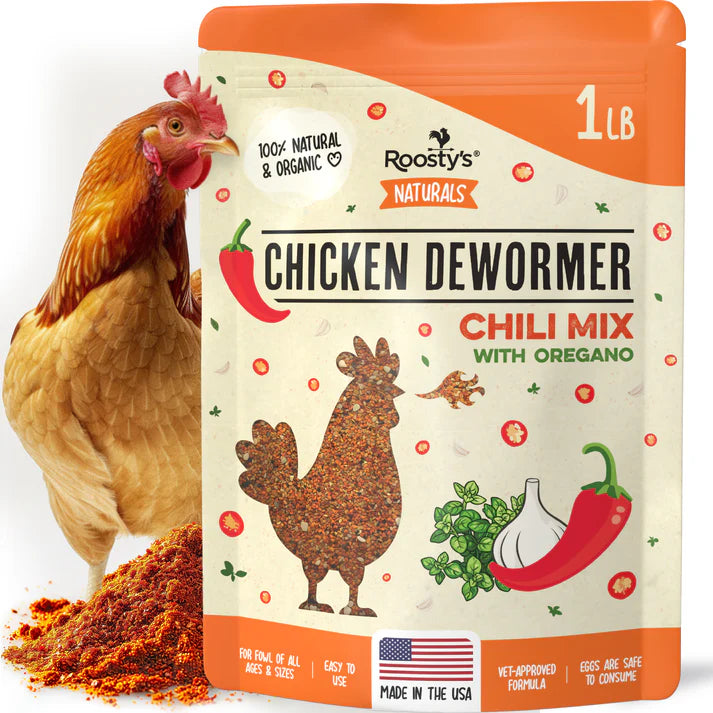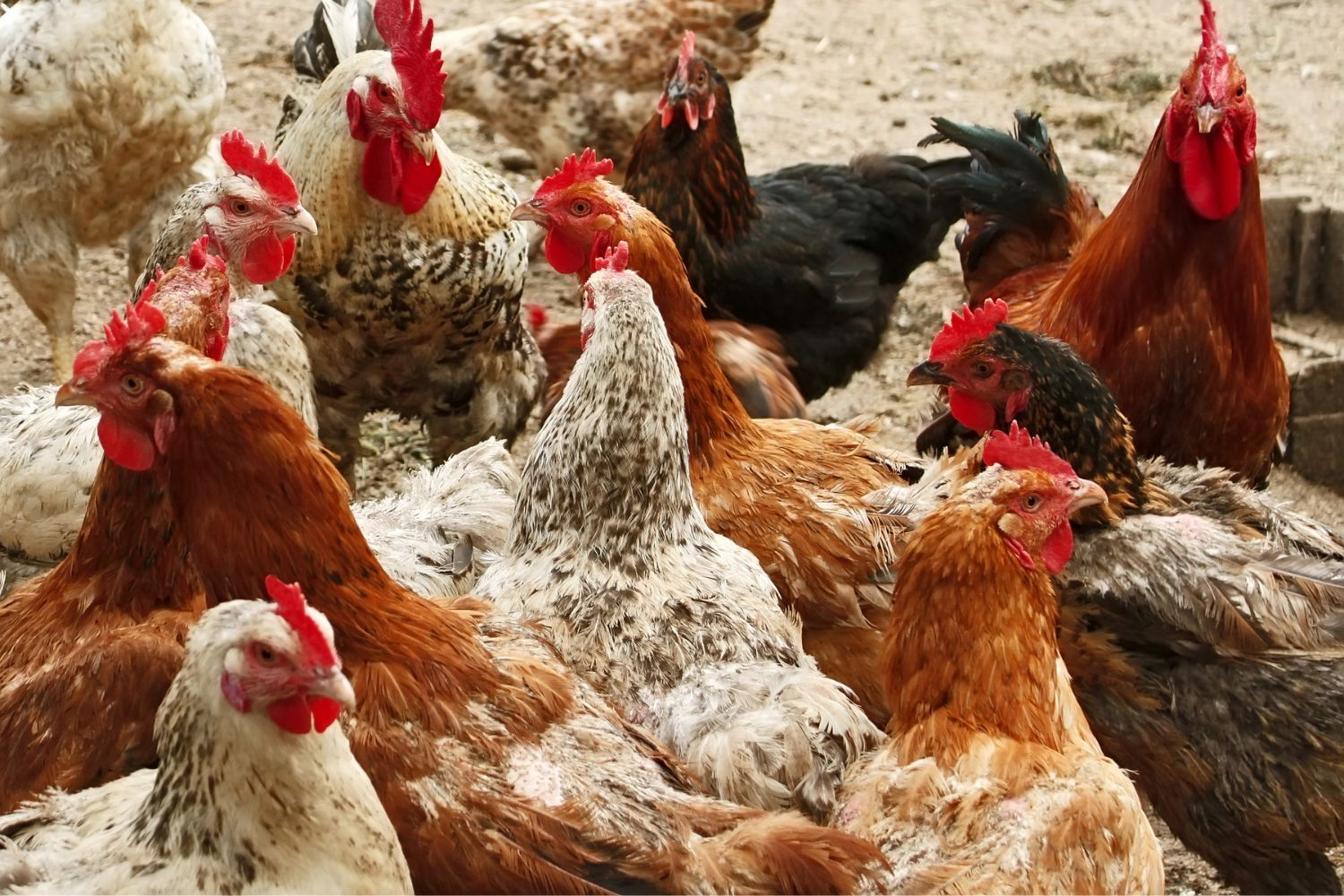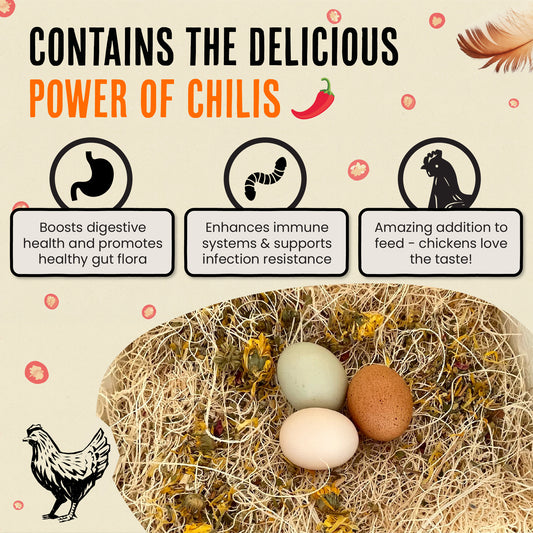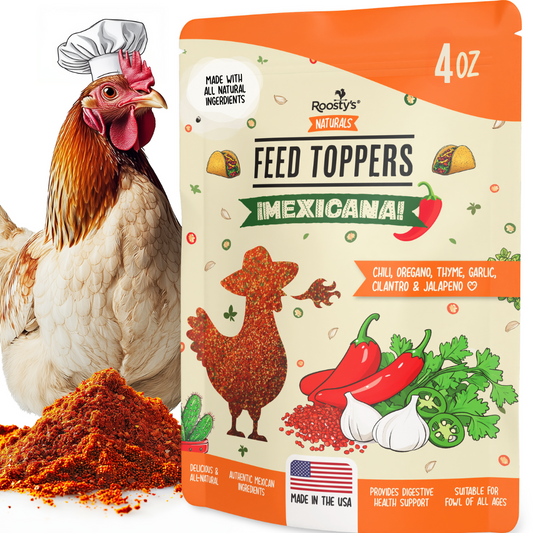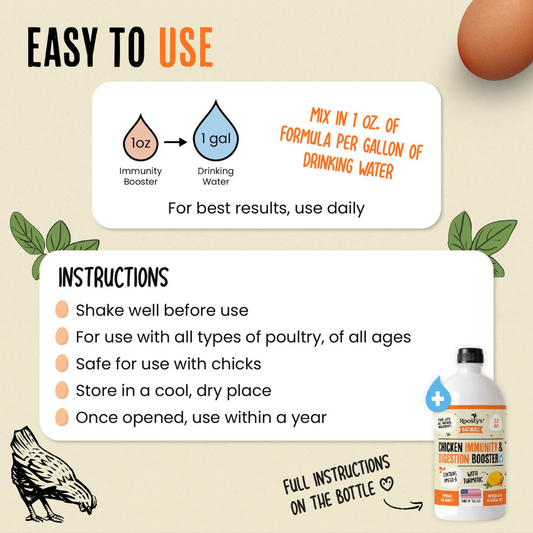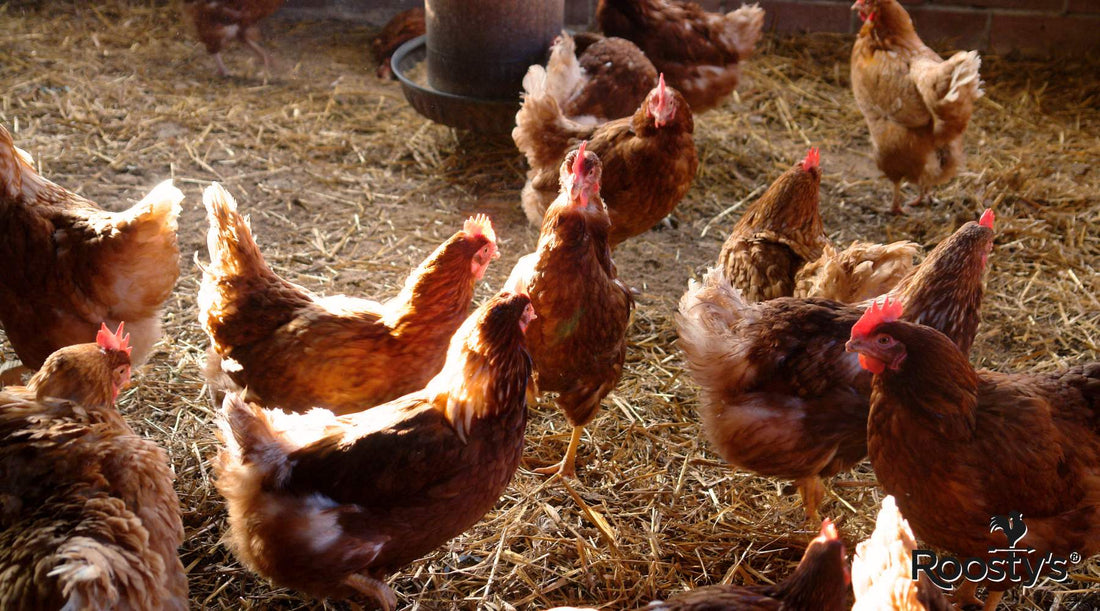
Efficient Solar Heater for Chicken Coop - Keep Your Chickens Warm

You want to keep your chickens warm, but you’re unsure which way is the most effective and efficient.
After a bit of research, you saw everyone clamoring about solar heaters. They sound like a fantastic idea, so you’re now interested in purchasing one.
There’s just one tiny problem…you have no clue where to begin.
How do you buy a solar heater for chicken coop areas? What type of solar heater is the best? What are the benefits of keeping your chickens warm with solar heaters??
So many questions run through your mind, but I’m about to put your brain at ease!
This guide will explain everything about efficient solar heaters for chicken coops. All of your questions will be answered, helping you make the perfect purchase.
What Is A Solar Heater For Chicken Coop Areas?
A solar heater for a chicken coop is any device that harnesses the power of solar energy to heat the inside of your coop.
In theory, it’s simple:
- Solar panels capture solar energy
- This energy is then converted to electricity
- The electricity then powers a heating device of your choosing
- The heat is dispersed through the chicken coop
As a result, you get a toasty chicken coop without pulling any power from the grid. It’s a highly sustainable way of looking after poultry, but there are still many things to think about.
--------
What Are Your Main Solar-Powered Heating Options?
The keen-eyed of you will notice I said “a heating device of your choosing” in the section above. Already, you’re wondering what this means.
Well, there are multiple ways you can use solar power to heat a chicken coop:
- Solar air heaters - This method takes solar energy through panels and heats up the air that passes through a solar collector. It then has fans that blow the air around the chicken coop. Effectively, it works like an HVAC system inside your house, but on a much smaller scale and with only heating capabilities rather than added air con.
- Solar heat lamps - Of all the ideas, solar heat lamps for chicken coops are the most common and popular. They work exactly the same as normal heat lamps - the lamps generate heat that radiates throughout the coop and controls the temperature. Obviously, the big difference is that these lamps are solar-powered.
- Solar radiators - I’ll admit, this is a more complex method, but it’s an option nonetheless. Here, you have a solar system that heats up water and passes the hot water through radiators inside the chicken coop area. These radiators will heat up the area and keep your chickens warm. If you have anything smaller than a walk-in chicken coop for 20 or more chickens, this method is not recommended.
- Solar floor heating - The final option is to install an underfloor heating system in your chicken coop. It can be tricky and expensive - especially if you’re already built a coop. The science behind it is as simple as all other methods. In this case, heating pipes under the floor are filled with a liquid that’s warmed up by solar energy collected by solar panels. It then passes through the tubes and heats the coop from the floor up.
Of all the options listed above, the best solar heater for chicken coops is a simple solar heat lamp.
Why?
Because this approach is the easiest to install, costs less than all other options, has a lower chance of breaking down, and ends up being more efficient.
You can purchase solar heat lamp kits that consist of a bulb with solar panels - and that’s pretty much it. All you need to do is install the solar panels on your coop, fit the light on the inside, and you’re done.
With other options - like a solar air heater - you have more parts to be wary of. More parts often make these methods more expensive while increasing the chances that something could break or go wrong.
Moreover, there’s another big reason I opt for solar heat lamps in chicken coops over the rest: they provide interior lighting.
The experts over at Hendrix Genetics Laying Hens state that chickens need light to express their behavior.
In essence, light helps to dictate their mood and stimulates them to be more active. Laying hens need light to regulate their reproductive cycles too.
So, in darker months when your chicken coop doesn’t get much daylight because the windows are covered to retain as much heat as possible, a heat lamp provides some additional lighting.
The Benefits Of A Solar Heater For Chicken Coops - Why Go Solar?

I know what you’re thinking…can’t you just use a normal heating system in your chicken coop?
Solar heat lamps for chicken coops are more expensive than regular heat lamps, why can’t you use them instead?
Using a solar-powered heating device will bring substantial benefits that traditional methods can’t compete with. Some of these are obvious, while others may fly below the radar - yet are equally important.
- Better for the environment - As detailed by Sustainability Success, solar energy is a renewable source of energy that doesn’t put harmful gases back into the air. This makes it far better for the environment when compared to a traditional heat lamp. If you used a normal heat lamp, you’d either pull electricity from the national grid - which isn’t renewable - or you’d need to power it via gas. Both options are nowhere near as good for the environment as solar power.
- Costs less money - While the initial installation of solar heat lamps for a chicken coop can be more expensive than traditional ones, the savings more than make up for it. Over time, you will spend zero dollars on heating your chicken coop. It all comes from the sun, which is clean, free, energy.
- Fewer fire risks - Traditional heat lamps are either electricity or gas-powered, both of which raise some fire safety concerns. It’s not unheard of for fires to start because these lamps get excessively hot and set the coop aflame, or there are issues with electrical wiring sparking and causing a fire. In fact, this news report from December last year shows just how devastating a heat lamp fire can be. It burned down the entire chicken coop and spread quickly to the house. A solar heat lamp has a lower risk of overheating while also containing fewer exposed wires. While there will always be a fire risk, it’s not as great.
- Blackout-proof heating - Blackouts can be extremely common in some areas of the country. Sources state that US power outages have doubled over the last two decades as a result of bad weather. Be it excessive heat, bad storms, or freezing cold weather, blackouts happen when the grid goes down or can’t handle energy demands. For a chicken owner, this is a problem as it could mean your hens are left without heat for hours. In the freezing winter, this might lead to fatal problems.Thankfully, solar heat lamps for chicken coops eliminate this problem. As I’ve mentioned already, all of your power comes from solar energy. You pull nothing from the grid, so a blackout won’t affect you. While nothing else has power, your chicken coop will remain warm and bright.
Overall, it’s safe to say that a solar heater is the wisest choice you can make for your poultry flock. It keeps them warm without creating any greenhouse gases or relying on the grid for electricity.
You also reduce the chances of fire risks (though I will talk about this in more detail later) and can save money on general operating costs.
With that in mind, there’s one big question to ask…
How To Choose The Best Solar Heat Lamp For Chicken Coops
A quick Google search will show you loads of possibilities when buying a solar heat lamp for chicken coops.
It can be a bit overwhelming - I’ll admit, I didn’t know where to start when I first bought my solar heat lamp.
So, I made this short buyer’s guide to help you know what to look for and consider as you shop for a solar-powered heat lamp to keep your chickens warm:
To be honest, when it comes to the style, your main concern is how the device works. Some solar heat lamps have panels attached to wires that attach to the bulb.
Others are more of an all-in-one system with the bulb directly connected to a solar panel above. This is the most fire-safe option, but it requires the right type of chicken coop roof to be installed.
Mainly, you’d need a flat roof so the top can poke outside with the bulb hanging below inside the coop. There’s no right or wrong answer here - just consider your chicken coop and what style will suit it the best.
As such, you need to be aware of the solar battery sizes. To make things easier, I suggest focusing on what the manufacturing states the lighting time is. For example, take this product here.
It’s a solar chicken coop light, but if you look at the description it says 10-12 hours of lighting. That should be more than enough to light and heat your chicken coop through the night.
Of course, if you wanted a bigger battery, you’d have to find a light that offers more hours than this.
You can also go by the solar panel wattage - in the example provided, it’s a 5W solar panel. The more watts, the more power this panel can store in the battery. It also means the panel can charge the battery quicker.
This is one of the most important factors when buying your solar heater for chicken coop areas!!
Don’t opt for the cheapest option you can find if it has a small battery that only provides a couple of hours of heat/light when the sun goes down. You need something capable of giving a full night’s worth of power.
Likewise, you may need more than one solar heat lamp if your chicken coop is truly massive.
As you browse the options online, you’ll soon understand which lights make the most sense for your coop.
A small coop may only need a small bulb without much heating power. Larger coops could require multiple bulbs or a heat lamp that provides more heat.
Similarly, heat lamps that have internal timers can be hugely beneficial. If you can configure it to turn off at a certain time and turn on when the sun goes down, then it makes your life way easier.
Armed with these points, you can begin your search for a solar heater for chicken coops.
I always think it’s a smart idea to find a few options and then compare them against one another.
Pay attention to customer reviews too - they’re really helpful at figuring out the pros and cons of certain heat lamps.
--------
How To Install A Solar Heat Lamp For Chicken Coop

I’ll be real with you, this is much simpler than you think. It’s nowhere near as complicated as installing a solar system for your house thanks to two factors:
- You’re dealing with a much smaller structure in your chicken coop
- Solar heat lamps come as systems with only a handful of parts
I’ll also say that you’ll receive instructions on how to install specific solar heat lamps when you buy them. All manufacturers can be slightly different, so be sure to refer to their instructions rather than blindly copying what I’m about to say!!
As a general overview, solar heater installation looks like this:
For systems with wires, you have more ability to move the panel around. With that in mind, Hobby Farms says the optimal place to put your solar panel is on the south side of the structure.
If you’re wondering why this matters, it’s because the sun’s path is always in the southern sky in the northern hemisphere. As detailed by Solarips, this means your panels can absorb more sun throughout the day.
From here, mount the panels using the materials provided so they are securely attached to the chicken coop roof.
Just like that, your solar heater installation is complete and your chicken coop is lovely and warm!
Why A Heater Is Important For Your Chicken Coop
If you’ve done a bit of research before reading this article, you may encounter some blogs or articles that state a chicken heater isn’t necessary.
In fact, Purina Mills says that there’s no need to buy heat lamps or a chicken coop heater for your flock.
However, the big caveat here is that some cold-weather chicken breeds can withstand harsh temperatures.
A lot of chickens aren’t bred for cold weather climates - and it also depends on where you live. If the temperature in the winter regularly dips well below freezing, a solar heater is definitely necessary.
As noted by the University of Minnesota, when chickens get too cold they become stressed. Prolonged stress can reduce a hen’s laying performance and possibly lead to death.
Therefore, a heater is needed to maintain the ideal heat in your chicken coop, so your flock doesn’t get too cold and stressed.
Setting The Ideal Temperature For Your Chicken Coop
I strongly recommend getting a thermostat installed on the wall in your chicken coop. It doesn’t need to be a fancy one - one of these traditional thermometers will be fine.
You should monitor the temperature every day, so you can regulate it and keep your chickens at the Goldilocks level.
Not too cold, not too warm, juuuust right!
Research from experts suggests that the best temperature for chickens is 70-75 degrees Fahrenheit. Use your heat lamp to increase the temperature to this level if it gets below it, and adjust the brightness of the bulb so it stays at around the same level.
You don’t want the coop to get too warm or it will stress out the chickens too. Also, if it’s really warm indoors and then they go out into the cold chicken run, they struggle to regulate their body temperature and this can cause health problems.
For that reason, some chicken owners consider installing exterior solar heat lamps for chicken runs too.
Personally, I don’t think this is necessary. Chickens won’t go outside when it’s dark and cold anyway, and the light pollution could annoy your neighbors.
Summary: Keep Your Flock Warm With Solar Heat Lamps For Chicken Coops
Firstly, thank you for taking the time to read this guide! I hope you’ve found it helpful as we have covered a lot of main talking points related to solar heaters for chicken coop areas. Before I sign off, let’s recap some of the key takeaways.
- Heating your chicken coop is useful for maintaining an ideal temperature of between 70-75 Fahrenheit
- When chickens get too hot or too cold, they become stressed, which is why temperature management is key
- Solar heaters are beneficial because they help you save money, have a positive impact on the environment, reduce fire safety risks, and are blackout proof
- Solar heat lamps are the best type of solar heater as they’re cost-effective and easy to install
- When installing solar heaters, try to place the solar panel on the southward-facing side of the chicken coop roof to absorb more solar power and be more efficient
- Consider the style, battery size, features, and cost of a solar heat lamp before purchasing - as well as taking the size of your chicken coop into account. Larger coops demand a bigger heat source
After taking all of this in, you should be ready to head out and find the ideal solar heater for your chicken coop.
Now, you can look after your hens and ensure they always receive the right level of heat - even in the coldest periods.
--------
